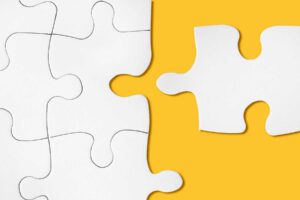The other electrons that are left form a lone pair. 76. Part A) What is the value of the bond angles in SiCl4? molecular geometry= Electrons are alike in charge and will repel each other. 9: (a) H 2 O has four regions of electron density around the central atom, so it has a tetrahedral electron-pair geometry. Start typing to see posts you are looking for. Here is the pictorial representation of how CCl4s and CH4 MO diagram looks like. In general, perhalogenated organic compounds should be considered toxic, with the narrow exception of small perfluoroalkanes (essentially inert due to the strength of the C-F bond). The number of valence electrons in CCl4 is 32. You'll get a detailed solution from a subject matter expert that helps you learn core concepts. We compare the EN between each bond. National Institutes of Health. 78. molecular geometry= polar or nonpolar? tetrahedral, linear, sp3, none, depends 4 bonds; 3 lone pairs: e- geometry= molecular geometry= document.getElementById( "ak_js_1" ).setAttribute( "value", ( new Date() ).getTime() ); Welcome to Techiescientist.com. Carbon is a p block element present in group 14th and 2nd period in the periodic table and has atomic number of 6. e- geometry= Part D) What is the value of the bond angles in XeCl2? The shape which allows four electron pairs to get as far apart as possible is a tetrahedron. All the electrons that take part in forming bonds are known as bonding pairs of electrons. Language links are at the top of the page across from the title. What is the NO bond order in nitrogen monoxide, NO? Count the number of electron groups and identify them as bond pairs of electron groups or lone pairs of electrons. The single lone pair's bond angles, as well as those of the other atoms in the molecule, are maximised by the seesaw form. What is the energy of the light in joules? 4 bonds; 1 lone pair: e- geometry= Bond angles also contribute to the shape of a molecule. The compound is clear and very stable in nature. If the compound is consumed or exposed to humans in large or continuous motion then the person or group of people can suffer from kidney or liver damage. Thus, the electron-pair geometry is tetrahedral and the molecular structure is bent with an angle slightly less than 109.5. The liquid is not soluble in water and is non-combustible. Using the VSEPR theory, the electron bond pairs and lone pairs on the center atom will help us predict the shape of a molecule. 10. The total number of valence electrons in CH4 adds up to be 8 (4 in carbon and 1 from each hydrogen atom). Now, we are ready to apply EN to determine whether or not molecules are polar. The Carbon atom takes a central place and the rest Chlorine atoms are placed around it. Fluid with kinematic viscosity \nu flows down an inclined circular pipe of length \ell and diameter D with flow rate QQQ. Find the vertical drop per unit length of the pipe so that the pressure drop (p1p2)\left(p_1-p_2\right)(p1p2) is zero for laminar flow. Drag the appropriate items to their respective bins. To visualize this, think about movies. If the structure is symmetric, then it is non-polar A molecule is polar when the electrons are not distributed equally and the molecule has two poles. It is because of the fact that there is an equal number of lone pairs of valence electrons on oxygen and sulfur which cancel out the overall effect making the structure symmetric. The steric number can be calculated by adding lone pairs of electrons on the central atom and the number of atoms directly bonded to the central atom. -bond angle= Otherwise, the central atom will not share its valence electrons and the formation of a new molecule will not take place. What do we do with all the EN? if the bond angles are "less than" = polar or nonpolar? (c) the resulting species are reproductively isolated or not. 1. If it has different terminal atoms, then it is polar. e- geometry= Except where otherwise noted, data are given for materials in their, https://en.wikipedia.org/w/index.php?title=Carbon_tetraiodide&oldid=1132329329, Pages using collapsible list with both background and text-align in titlestyle, Articles containing unverified chemical infoboxes, Creative Commons Attribution-ShareAlike License 3.0, This page was last edited on 8 January 2023, at 10:36. polar or nonpolar? To know about the polarity of the CH4 molecule, check out our detailed blog post on CH. The net dipole is the measurable, which is called the dipole moment. hybridization= For the Methane molecule, there are four covalent bonds between Hydrogen and Carbon atoms. bond angle= central atom= Electron pairs repel each other to get as far apart as possible. It is formed by the decaying of natural minerals and is widely used as fuel. As shown in the above picture, the bond angle between two Chlorine atoms is 109 degrees 28. These are some of the basic properties of Carbon tetrachloride. e- geometry= Part C) What is the value of the bond angles in AlCl3? Here is how we can find out the geometry of CCl4. There is some dipole moment between the bonding and non-bonding pairs when they are arranged in a plane. So starting off by drawing the Lewis structure: Water has four electron groups so it falls under tetrahedral for the electron-group geometry. Well, EN is how much an element really wants an electron. Step 5: Search for the central atom: It will be carbon as it has the lowest electronegativity value out of all the three participating atoms. Talking about its properties, Methane is a colorless and flammable gas. bond angle= The CH4 molecule will have 109.5 bond angles as there is no distortion in its shape. It has a bright red color and decomposes readily to give tetraiodoethylene C2I4. Is Saltwater a Homogeneous or a Heterogeneous Mixture? If it has different terminal atoms, then it is polar. The molecular geometry can further be studied through the below-mentioned structural representation: From the above-mentioned, it may confuse you that even after having a lone pair of electrons, the molecular structure of carbonyl sulfide is linear. Hybridization is a mathematical procedure of determining the reason behind bond formation taking place among the participating atoms with a molecule. The following chart will help you in determining the bond angles for different molecules having varying shapes/molecular geometries according to the VSEPR concept. Dots are represented to show the electrons, and lines are used to indicate the bonds between the atoms. Here are some of the applications of CCl4 that you should know about: After learning in detail about the compound CCl4, lets quickly sum up what we have read so far. It is thermally and photochemically unstable. molecular geometry= Will the molecule or ion be diamagnetic or paramagnetic? From the Lewis structure, it is clear thatthe molecular geometry of carbonyl sulfide is linear as all three participating elements are arranged at 180 from one another. So sigma + would be on the hydrogen atom and sigma - would be on the Chlorine atom. Given tetrahedral geometry, /_Cl-Si-Cl = 109.5^@. Methane is one of the simple organic molecules, given its straightforward structure. Electron pairs repel each other to get as far apart as possible. We see that C has three single bonds to 2 Hydrogens and one single bond to Carbon. 0 LP= Predict what these bond angles might be with respect to the ideal angles and justify your prediction. We can apply this idea to electrons. BCl 3 has a trigonal planar structure with bond angles of 120. 85. -bond angle= The shape which allows four electron pairs to get as far apart as possible is a tetrahedron. Now each Hydrogen just needs one more valence electron to attain a stable structure. Do you know carbonyl sulfide is a common gas on planet Venus? 10 b. With, Excited state electron configuration |How to find, Examples|, How to Write Net Ionic Equations | Method + Examples |, How to find Valence electrons | Various method and Examples, How to find molar solubility from Ksp? Select all that apply: [4] If it is linear or square planar, then it is non-polar. (Provide a number.). CH4 Shape Dipole moment is equal to the product of the partial charge and the distance. Now, we move on to the next Carbon. A passion for sharing knowledge and a love for chemistry and science drives the team behind the website. To understand this better, let us calculate the Valence electrons of CCl4. I write all the blogs after thorough research, analysis and review of the topics. 4. Valence Bond Theory -bond angle=, trigonal planar, 120, bent, <120, linear, none, e- geometry= trigonal planar Lewis structure is the pictorial representation of the arrangement of valence shell electrons in the molecule, which helps us understand the atoms bond formations. Tetrahedral, with 109.5^0 bond angles. Carbon dioxide is therefore linear in electron-group geometry and in molecular geometry. Amino acids are biological compounds that link together to form proteins, the workhorse molecules in living organisms. The double bonds between oxygen-carbon and sulfur-carbon as well as the equal number of lone pairs of electrons on both sulfur and oxygen atoms exert an almost similar force of repulsion to give a symmetrical structure to the carbonyl sulfide molecule. Your email address will not be published. Determine the molecular geometry for each Enter the bond angle of the molecule. ), Valence-Shell Electron-Pair Repulsion Theory, Molecules with More than One Central Atom, Steps Used to Find the Shape of the Molecule, valence-shell electron-pair repulsion (VSPER) theory. I am Savitri,a science enthusiast with a passion to answer all the questions of the universe. CI4 or carbon tetraiodide is a tetrahalomethane in which carbon is attached to four iodine atoms via covalent bonds and is sp3 hybridized. Part B) What is the value of the smallest bond angle in ICl4-? In this article, we will show the ideal bond angles chart for each type of VSEPR (AXE) notation. Hence, CH4 or Methane has a Tetrahedral Molecular geometry. (This rule is more important than rule 1, so it overrules it because it has lone pairs.) Name the electron-group geometry. Carbon tetraiodide is used as an iodination reagent, often upon reaction with bases. Two of the 2P orbitals (i.e., 2Px & 2Py) undergo Hybridization, and their shape and energy . But before proceeding with the Lewis Dot Structure, we will first look at the total number of valence electrons for this molecule as these are the ones that participate in the bond formation. or Methane, there are four single or covalent bonds between each Hydrogen and Carbon atom. Is it polar? 4 bonds; 3 lone pairs: nonbonding e- PAIRS on CENTRAL ATOM=, e- geometry= linear: Is CI4 polar or nonpolar? Carbon tetraiodide. The valence electrons are present in the outermost shell of the atom and participate in the bond formation. Hence, (4 + 0) = 4 is the steric number of central atom carbon in the CI4 molecule that gives Sp 3 hybridization. 4000 views polar or nonpolar? According to VSEPR theory, electron pairs of the same nature repel each other. Bond angles also contribute to the shape of a molecule. e- geometry= The compound can be toxic to human skin and can cause major harm if exposed to humans in large quantities. Draw a skeleton structure in which the other atoms are single-bonded to the central atom a "C" atom with four "Cl" atoms attached . 9. Lets try determining the geometric structures of H2O and CO2. One 2s orbital and three 2p orbitals are hybridized for the Carbon atom. In which cases do you expect deviations from the idealized bond angle? Check all that apply. Write orbital diagrams (boxes with arrows in them) to represent the electron configurationswithout hybridizationfor all the atoms in PH3. polar or nonpolar? { Geometry_of_Molecules : "property get [Map MindTouch.Deki.Logic.ExtensionProcessorQueryProvider+<>c__DisplayClass228_0.b__1]()", Lewis_Symbols : "property get [Map MindTouch.Deki.Logic.ExtensionProcessorQueryProvider+<>c__DisplayClass228_0.b__1]()", Lewis_Theory_of_Bonding : "property get [Map MindTouch.Deki.Logic.ExtensionProcessorQueryProvider+<>c__DisplayClass228_0.b__1]()", Violations_of_the_Octet_Rule : "property get [Map MindTouch.Deki.Logic.ExtensionProcessorQueryProvider+<>c__DisplayClass228_0.b__1]()" }, { Fundamentals_of_Chemical_Bonding : "property get [Map MindTouch.Deki.Logic.ExtensionProcessorQueryProvider+<>c__DisplayClass228_0.b__1]()", Lewis_Theory_of_Bonding : "property get [Map MindTouch.Deki.Logic.ExtensionProcessorQueryProvider+<>c__DisplayClass228_0.b__1]()", Molecular_Orbital_Theory : "property get [Map MindTouch.Deki.Logic.ExtensionProcessorQueryProvider+<>c__DisplayClass228_0.b__1]()", Valence_Bond_Theory : "property get [Map MindTouch.Deki.Logic.ExtensionProcessorQueryProvider+<>c__DisplayClass228_0.b__1]()" }, [ "article:topic", "Molecular Geometry", "VSEPR", "showtoc:no", "license:ccbyncsa", "licenseversion:40" ], https://chem.libretexts.org/@app/auth/3/login?returnto=https%3A%2F%2Fchem.libretexts.org%2FBookshelves%2FPhysical_and_Theoretical_Chemistry_Textbook_Maps%2FSupplemental_Modules_(Physical_and_Theoretical_Chemistry)%2FChemical_Bonding%2FLewis_Theory_of_Bonding%2FGeometry_of_Molecules, \( \newcommand{\vecs}[1]{\overset { \scriptstyle \rightharpoonup} {\mathbf{#1}}}\) \( \newcommand{\vecd}[1]{\overset{-\!-\!\rightharpoonup}{\vphantom{a}\smash{#1}}} \)\(\newcommand{\id}{\mathrm{id}}\) \( \newcommand{\Span}{\mathrm{span}}\) \( \newcommand{\kernel}{\mathrm{null}\,}\) \( \newcommand{\range}{\mathrm{range}\,}\) \( \newcommand{\RealPart}{\mathrm{Re}}\) \( \newcommand{\ImaginaryPart}{\mathrm{Im}}\) \( \newcommand{\Argument}{\mathrm{Arg}}\) \( \newcommand{\norm}[1]{\| #1 \|}\) \( \newcommand{\inner}[2]{\langle #1, #2 \rangle}\) \( \newcommand{\Span}{\mathrm{span}}\) \(\newcommand{\id}{\mathrm{id}}\) \( \newcommand{\Span}{\mathrm{span}}\) \( \newcommand{\kernel}{\mathrm{null}\,}\) \( \newcommand{\range}{\mathrm{range}\,}\) \( \newcommand{\RealPart}{\mathrm{Re}}\) \( \newcommand{\ImaginaryPart}{\mathrm{Im}}\) \( \newcommand{\Argument}{\mathrm{Arg}}\) \( \newcommand{\norm}[1]{\| #1 \|}\) \( \newcommand{\inner}[2]{\langle #1, #2 \rangle}\) \( \newcommand{\Span}{\mathrm{span}}\)\(\newcommand{\AA}{\unicode[.8,0]{x212B}}\), 1. -bond angle=, trigonal bipyramidal, 90,120,180, seesaw, <90,120,180, T-shape, <90,180, linear, 180, linear, none, e- geometry= trigonal bipyramidal 1 LP= Let us not waste time in understanding the structure of CCl4. polar or nonpolar? Manufacturers recommend that carbon tetraiodide be stored near 0C (32F). > Lewis Structure Here are the steps that I follow when drawing a Lewis structure. Lewis structures are based on the octet rule, which says an atom must have eight valence electrons in its outer shell to attain a structure similar to the closest noble gas. C. decomposition 4LP= National Library of Medicine. 6 bonds; 2 lone pairs: Required fields are marked *. For example, a molecule with two bond pairs and two lone pairs would have this notation: AX2E2. To summarize this blog, we can conclude the following points for the Methane molecule: To know about the polarity of the CH4 molecule, check out our detailed blog post on CH4polarity to find out if the molecule is polar or nonpolar. Why don't they gain/lose electrons? See Answer trigonal bipyramidal, trigonal bipyramidal, sp3d, 90,120,180, nonpolar. What is the VSEPR shape of the molecule H2O. As shown in the above picture, the bond angle between two Chlorine atoms is 109 degrees 28. To sum up there are four simple steps to apply the VSEPR theory. Policies. bond angle= My aim is to uncover unknown scientific facts and sharing my findings with everyone who has an interest in Science. Step 4: Determine the bond formation taking place between the participating atoms: Double bond will form as oxygen and sulfur will bond with carbon only for two valence electrons each. It is tetrahedral in shape with bond angles of 109.5 . So for finding out the hybridization for the Carbon atom, we will find out the Steric Number. So, there is derivation in the bond angle due to the lone pair and bond pair repulsion. 6 bonds; 0 lone pairs: Step 1: Determine the valence electrons for each participating atom: It is four for carbon and six for both oxygen as well as sulfur. Each piece will form a particular shape. By this logic, the farther the orbit is weaker will be the force of attraction by the nucleus. So, Is CI4 polar or nonpolar? bond angle= The polarity of any compound depends on its molecular geometry. -bond angle=, tetrahedral, 109.5, trigonal pyramidal, <109.5, bent, <109.5, linear, none, e-geometry= tetrahedral The Lewis structures are also known as Lewis dot diagrams or electron dot diagrams. 2. We aim to make complex subjects, like chemistry, approachable and enjoyable for everyone. OCS normally written as COS is the chemical formula of Carbonyl Sulfide, a well-known and most abundant stratospheric gas. Hydrogen is the very first element in the periodic table having an atomic number 1. Why? Due to this repulsion and forming of bond angle, the compound takes a shape. Hence, the carbonyl sulfide starts behaving as a linear molecule. Lone electrons are represented as dots in the Lewis structure, whereas, bonds are represented as a single line in the structure. It is also known as an alkane. The units for dipole is expressed in debye which is also known as Coulombs x meter (C x m). We hope that you get a clear picture of CCL4s MO diagram and how the bonds exist within the compound. The carbon-fluorine bond length is typically around 1.32 Angstrom. To determine the polarity in any element, first, it is essential to find the electronegativity values of all the participating atoms. Step 2: Determine the total number of valence electrons available to draw the Lewis structure of carbonyl sulfide: It is 16 for one OCS molecule. The difference between the central atom and other participating atoms must be greater than 0.4 to become polar in nature. Make an appointment to interview someone at one of the organizations identified in Activity 1. The electrons that participate in the bond formation and are in the outermost shell of the atom are referred to as valence electrons. For bond angles, 3D is better. C-C-C-C is the simplified structural formula where the Hydrogens (not shown) are implied to have single bonds to Carbon. D. respiration. It is only 2.3% by weight carbon, although other methane derivatives are known with still less carbon.[4]. document.getElementById( "ak_js_1" ).setAttribute( "value", ( new Date() ).getTime() ); Welcome to Techiescientist.com. All the valence electrons are used up in the bond formation; hence the molecule has no lone pairs, and there are four bonding pairs of electrons. VSEPR focuses not only on electron pairs, but it also focus on electron groups as a whole. There are four bonding pairs of electrons and no lone pair of electrons in this molecule. Arrange all the Hydrogen atoms around the Carbon atom. CSID:10055, http://www.chemspider.com/Chemical-Structure.10055.html (accessed 16:15, May 1, 2023), Validated by Experts, Validated by Users, Non-Validated, Removed by Users, Predicted data is generated using the ACD/Labs Percepta Platform - PhysChem Module, Click to predict properties on the Chemicalize site, For medical information relating to Covid-19, please consult the. -bond angle=, octahedral, 90, square pyramidal, <90, square planar, 90, e- geometry= octahedral a. The species NO2, NO2 + , and NO2 - in which N is the central atom have very different bond angles. According to the Lewis model, which species is most stable? All the electrons that are shared between C and Cl form a bond. It also discusses the molecular geometry and bond angle for CI4. Part C) For AlCl3, it has a trigonal planar molecular geometry and its bond angle is 120 degrees. In fact, the bond angle is 104.5. Use molecular orbital theory to predict if each molecule or ion exists in a relatively stable form. If arrows are drawn away from each other like <--- and --->, then we are more likely to have no net EN because the molecule is symmetrical. A MO diagram is nothing but a representation of bonds that are formed within the atoms to form a compound. hybridization= Science. around the world. 3D or 2D? The farthest way they can get away from each other is through angles. In this blog post, we will find the Lewis Structure, Molecular Geometry, and Shape of the molecule. Talking about its properties, Methane is a colorless and flammable gas. arrangement of atoms in a molecule. CH4 Lewis Structure, Hybridization, Molecular Geometry, Bond Angle and Shape. Again, we have 4 electron groups which result in a tetrahedral. For the final description, we combine the separate description of each atom. Given that, we would conclude from the Lewis model that the CN- ion is likely to be the most, if not the only, stable structure. Carbon tetraiodide is slightly reactive towards water, giving iodoform and I2. With 4 tetrahedrals, the shape of the molecule looks like this: en.Wikipedia.org/wiki/File:Butane-3D-balls.png. 2LP= bond angle= 15K views 1 year ago An explanation of the molecular geometry for the CH2Cl2 (Dichloromethane or Methylene chloride) including a description of the CH2Cl2 bond angles. CCl4 is a colorless liquid in nature with a slight sweetish smell. From left to right, EN will increase. The total valence electron is available for drawing the. The sp3 and sp3d2 hybridization schemes have no unhybridized p-orbitals left to form -bonds. Hey folks, this is me, Priyanka, writer at Geometry of Molecules where I want to make Chemistry easy to learn and quick to understand. Sodium peroxide, Na2O2, consists of Na+ and O22 (peroxide) ions. 11 Uses of Platinum Laboratory, Commercial, and Miscellaneous, CH3Br Lewis Structure, Geometry, Hybridization, and Polarity. Each bond requires two valence electrons, and hence eight valence electrons are used up by forming bonds. The video answers the question, Is CI4 polar or nonpolar? To identify and have a complete description of the three-dimensional shape of a molecule, we need to know also learn about state the bond angle as well. We will be needing to add all the electrons that are bonded and those which are lone to get the number of Valence electrons. With the help of a MO diagram, the existence of certain compounds can be explained. The bonds and lone pairs are collectively known as Valence electrons. Bond angles are the angles between adjacent lines representing bonds. - The basic molecular geometries are linear, bent, trigonal planar, tetrahedral, trigonal pyramidal, trigonal bipyramidal, seesaw-shaped, T-shaped, octahedral, square pyramidal, and square planar. What's better? Then, with the Lewis structure, we apply the valence-shell electron-pair repulsion (VSPER) theory to determine the molecular geometry and the electron-group geometry. Initially, the compound had everyday applications but considering its harm to humans the chemical is now banned from use. 0 LP= Now that we have a background in the Lewis electron dot structure we can use it to locate the the valence electrons of the center atom. Since both arrows point toward Oxygen, we can say that there is a net EN. As Carbon has four valence electrons, it will share all four electrons with the Hydrogen atoms. - Relationship,. If any human inhales CCl4 compound (short-term) or gets orally exposed to it then they can feel headache, lethargy, weakness, and nausea. In this case, the compound of CCl4 takes a tetrahedral shape. Chemistry. Oxygen has six valence electrons and atomic number eight. Hybridization in simple terms means the distribution of electrons in different energy orbitals to get an idea about the compound and its properties. if the bond angles are exact = polar or nonpolar? Its LD50 on rats is 18mg/kg. 2. CH, is also used in the natural production of several. It is irritant and somewhat toxic in nature. A sulfur atom has 6 electrons in its third (outermost) shell, which can hold 8 electrons. But as there are no lone pairs of electrons in this molecule, H-C-Hs bond angle is 109.5. The structure of silicon tetrachloride is tetrahedral. (Check all that apply), linear, trigonal planar, tetrahedral, trigonal bipyramidal, octahedral. Thus, 4 electrons of Carbon and 4 electrons of Chlorine are used in bond formation, which totals as 8 electrons. (See how many lone pairs there are.). Each player represent an element and the ball represents the electron. We aren't done, yet! polar or nonpolar? We need to comprehend electronegativity which is abbreviated EN. You cannot complete your understanding of a compound if you are not thorough with the basic concept and idea of hybridization. This takes us to the conclusion that there are 6 valence electrons on each of the Chlorine atoms after bonds are formed. Moreover, the molecular geometry of this molecule can be studied in detail with the help of the Valence Shell Electron Pair Repulsion (VSEPR) Theory. During hybridization, the properties of the compound can be altered minutely or drastically depending on the compound and conditions. Determine the electron geometry for each molecule. Hence, sharing of valence electrons takes place among all the participating atoms to achieve a stable condition. We took a look at butane provided by the wonderful Wikipedia link. Chem. Your email address will not be published. Explain briefly. This helps us to understand the geometry of CCl4 which is tetrahedral. trigonal bipyramidal, T-shape, sp3d, <90,180, polar. e- geometry= hybridization= Hence four hybrid orbitals are formed for CH4, and referring to the table given below, we can say that it has sp3 hybridization. (b) two or three species result. In the CI4 Lewis structure, a total of 24 nonbonding electrons and 8 bonded electrons are present. B. photosynthesis Its molecular weight is 519.63g. The team at Topblogtenz includes experts like experienced researchers, professors, and educators, with the goal of making complex subjects like chemistry accessible and understandable for all. During your visit, find answers to the following questions: VSEPR theory includes two types of geometries: electron geometry and molecular geometry. Its synthesis entails AlCl3-catalyzed halide exchange, which is conducted at room temperature:[7]. Petrucci, Ralph H., William S. Harwood, F. Geoffrey Herring, & Jeffry D. Madura, Tetrahedrality and the Relationship between Collective Structure and Radial Distribution Functions in Liquid Water P. E. Mason and J. W. Brady J. Phys. molecule is made up of one Carbon atom and four hydrogen atoms. Name the shape and determine whether they are polar or non-polar. Each individual bond is polar but both molecules have symmetrical geometry so the dipole bonds are canceled. CO2 and CCl4 are both nonpolar because of the 3D geometry of the molecule. CH4 is also used in the natural production of several organic compounds. Cumulative Problem This Carbon has 2 single bonds to 2 Carbons and 2 single bonds to 2 Hydrogens. I am Savitri,a science enthusiast with a passion to answer all the questions of the universe. Back on earth, as carbonyl sulfide is the main source of sulfur here, it becomes crucial to understand the molecular behavior of this chemical compound. The molecular orbital model indicates that all three carbon-nitrogen species are stable, and that CN-, with a bond order of 3, is the most stable. A major difference between allopatric and sympatric speciation is whether. bond angle= Carbon in Methane takes the central position as it is less electronegative than the Hydrogen atoms. polar or nonpolar? Figure 7.6. The x represents the number of lone pairs present in the molecule. e- geometry= In this case, the compound of CCl4 takes a tetrahedral shape. document.getElementById( "ak_js_1" ).setAttribute( "value", ( new Date() ).getTime() ); Methane is one of the simple organic molecules, given its straightforward structure. Being bright red, it is a relatively rare example of a highly colored methane derivative. It has the chemical formula of CH, and comprises one carbon atom forming bonds with four hydrogen atoms. molecular geometry= ; 1984, electronic group geometry: trigonal planar, electronic group geometry: trigonal-bi-pyramidal. For example, the U.S. 3-Month Treasury and U.S. 4-Month Treasury yields currently . Using this data, we can predict the ideal bond angle for a molecule. Why must the central atom in a molecule have the lowest electronegativity? Electrons are negative. Thus there eight valence electrons for Methane. tetrahedral, bent, sp3, <109.5, polar 4 bonds; 2 lone pairs: e- geometry= molecular geometry= hybridization= bond angle= polar or nonpolar? 0 LP= It is soluble in nonpolar organic solvents. polar or nonpolar? This problem has been solved! Example: Ethylene or Ethene Molecule (C 2 H 4): In the Ethene molecule, each carbon undergoes SP 2 Hybridization. The hybridization of CCl4 is sp3. Alcohols are converted in and to iodide, by a mechanism similar to the Appel reaction. This is all about the compound CCl4, its Lewis structure, hybridization, molecular geometry, polarity, applications, and MO diagram. e- geometry includes all bonded + lone pairs View all posts by Priyanka , Your email address will not be published. The shape of CO2 is linear because there are no lone pairs affecting the orientation of the molecule. If we break down each Carbon, the central atoms, into pieces, we can determine the relative shape of each section. As stated above, molecular geometry and electron-group geometry are the same when there are no lone pairs. Molecular Formula CI. There are three ways to go about determining whether a molecule is polar or not. From bottom to the top, EN will increase. Now lets move into the study of its structure and other details, starting from its Lewis structure. It is this property that makes an atom either accept or share its valence electrons. Another explanation for the polar nature of carbonyl sulfide lies in the fact that the net dipole moment on this molecule is not zero.
Flora Macnichol Alice Keppel,
Worst Suburbs In Sunshine Coast 2020,
West Green Dorms Ohio University,
Articles B





